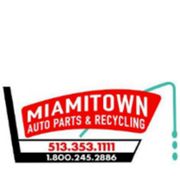3 Tips for Buying a Used Radiator

A car’s radiator cools the engine and prevents overheating. It does this by pushing coolant that absorbs heat away from the engine, through cooling fins, and then back through the engine again. Eventually, wear and tear can cause radiators to crack or break, requiring a replacement. If your vehicle needs a new radiator, the tips below will help you find a quality and cost-effective auto parts replacement.
How to Buy a Used Radiator for Your Car
1. Buy the Right Type
You can find used radiators for sale online and at any used auto parts store or scrapyard. However, make sure you are searching for the right type of radiator for your vehicle. The two most common types are crossflow and downflow radiators. The best way to find the right auto part is to search by the original part’s original equipment manufacturer (OEM) number. The OEM number is typically on the radiator, but you can also call the dealership that sold your vehicle to get the number.
2. Look for the Best Deal
 While you may want to save time by buying a radiator from the first used auto parts store you visit, you should always price shop. Read the details of any sales you find. Some parts come with a warranty while others do not. A store may allow returns, but others will only replace it if it doesn’t fit your vehicle.
While you may want to save time by buying a radiator from the first used auto parts store you visit, you should always price shop. Read the details of any sales you find. Some parts come with a warranty while others do not. A store may allow returns, but others will only replace it if it doesn’t fit your vehicle.
3. Inspect the Replacement
Before you pay, examine the radiator. The cooling fins should be even and straight, and there should be no visible corrosion or stripped paint on the radiator. Corrosion and stripped paint indicate past leaks and damage. Make sure the mounting brackets are not bent, or you could have difficulty installing it.
If you’re looking for a used radiator, contact Miamitown Auto Parts & Recycling in Cleves, OH. Serving the Tri-State area, their facilities offer used parts from their salvage yards and an inventory of new aftermarket parts. Their staff can also advise you on the right part for your vehicle upon request. Call (513) 353-1111 to speak to a representative, or visit their website for information about their products and services.
About the Business
Have a question? Ask the experts!
Send your question

